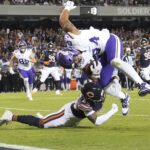What is a Triple Double in Basketball, and why does it matter so much in today’s NBA?
If you’ve tuned into games lately, you’ve heard commentators hyping this stat constantly.
It’s become one of the most talked-about achievements in basketball, and for good reason—it shows a player’s complete game.
What is a Triple Double in Basketball?

Let’s break down the numbers, explore why triple-doubles exploded in popularity, and give you the insights to understand this phenomenon like a pro.
What is a Triple Double in Basketball?
Here’s the straightforward answer.
A triple-double happens when a player records 10 or more in any three of basketball’s five main statistical categories during a single game.
Those five categories are:
- Points
- Assists
- Rebounds
- Steals
- Blocks
Example: A player finishes with 12 points, 10 assists, and 11 rebounds. That’s a triple-double, even if they have zero steals and zero blocks.
The most common combination is points + assists + rebounds. Other combos exist (like points + rebounds + blocks), but they’re much rarer.
How to Read Box Scores and Spot a Triple-Double?
Want to identify a triple-double while watching a game?
Here’s your step-by-step guide:
- 1. Find the Box Score: Check the on-screen graphic during timeouts, or pull up ESPN or NBA.com on your phone during the game.
- 2. Locate the Five Key Stats: Every box score lists these in order: Points (PTS), Rebounds (REB), Assists (AST), Steals (STL), Blocks (BLK).
- 3. Look for Double Digits: Scan each player’s line. If ANY three categories show 10 or higher, that’s your triple-double.
- 4. Watch for “Triple-Double Watch” Graphics: TV broadcasts will display a special graphic when a player gets close (usually at 8+ in three categories).
- 5. Understand the Official Rule What is a triple double in basketball rules?: The NBA officially counts it when you hit 10+ in three categories by the final buzzer. Halftime stats don’t count—it must be the full game total.
The Rise of the Triple-Double: Simple Analysis
Triple-doubles used to be rare. Now they happen almost every night. What changed?
Here’s the breakdown:
- 1. Pace Is Up: The NBA plays faster now than any point in the last 30 years. More possessions per game = more opportunities to rack up points, assists, and rebounds.
- 2. Positionless Basketball: The modern game doesn’t lock players into rigid positions. Guards grab rebounds. Big men facilitate from the perimeter. Everyone does a little of everything.
- 3. Three-Point Revolution = Rebounding Spread: Teams shoot way more threes now. When shots bounce off the rim from distance, rebounds are available farther from the basket—meaning guards and wings can grab them instead of just centers.
- 4. Star Ball-Handlers Control Offense: Modern offenses funnel through one or two primary playmakers. These players naturally accumulate assists because they touch the ball every possession.
- Quick note: Why is it called a triple double?: Because you’re hitting “doubles” (double digits = 10+) in THREE categories. Triple = three, double = double digits. That’s literally it.
The game evolved to reward versatile players who can do everything—and the triple-double became the perfect way to measure that versatility.
Triple-Double Leaders: Quick Stats
When discussing what is a triple double in basketball all time, these names always come up.
| Stat Category | Player | Short Note |
|---|---|---|
| Most Career Triple-Doubles | Oscar Robertson | 181 total (all-time leader for decades) |
| Most Seasons Averaging a Triple-Double | Russell Westbrook | 3 consecutive seasons (2016-17, 2017-18, 2018-19) |
| Youngest to Record a Triple-Double | LaMelo Ball | 19 years old: 22 pts, 12 reb, 11 ast vs Atlanta |
Table note: Mobile-friendly and will adjust to smaller screens automatically.
These three players represent different eras of the triple-double:
- Robertson pioneered it in the 1960s when it was considered nearly impossible
- Westbrook made it routine in the 2010s by averaging one for three straight years
- Ball showed that young players can achieve it earlier than ever in today’s game
Oscar Robertson’s 181 career triple-doubles stood as the benchmark for over 50 years. Russell Westbrook eventually surpassed it and continues adding to his total.
How Players Can Build Balanced Stat Lines?
Want to understand how players rack up triple-doubles?
Here are four key strategies:
- 1. Rebound Positioning: Don’t just stand around after a shot. Guards should crash the glass on long rebounds from three-point attempts. Big men should box out and secure defensive boards.
- 2. Pass Awareness: Look for open teammates constantly, especially after drawing defenders. One extra pass can turn a good shot into a great shot—and earn you an assist.
- 3. Defensive Activity: Active hands lead to steals. Contesting shots at the rim can produce blocks. Hustle on defense adds to your stat line while helping your team win.
- 4. Free-Throw Attempts: Drawing fouls and converting free throws is the easiest way to pad your point total without taking difficult shots. Aggressive drives to the basket create these opportunities.
The key insight? Triple-doubles reward players who stay engaged in every aspect of the game, not just offense.
Wrapping Up: Understanding the Triple-Double
The triple-double has transformed from a once-in-a-blue-moon achievement to a nearly nightly occurrence.
But even with increased frequency, it remains a mark of excellence. What is a Triple Double in Basketball?
It’s proof that a player dominated in multiple ways—scoring, passing, rebounding, or defending—all in the same game.
Whether you’re watching Oscar Robertson’s historic season, Russell Westbrook’s consecutive year dominance, or LaMelo Ball becoming the youngest ever, the triple-double represents basketball at its most complete.
The next time you see that graphic pop up on your screen showing a player at 8-9-8, you’ll know exactly what’s at stake.
Have you seen a live triple-double? Tell us in the comments which performance impressed you most!





